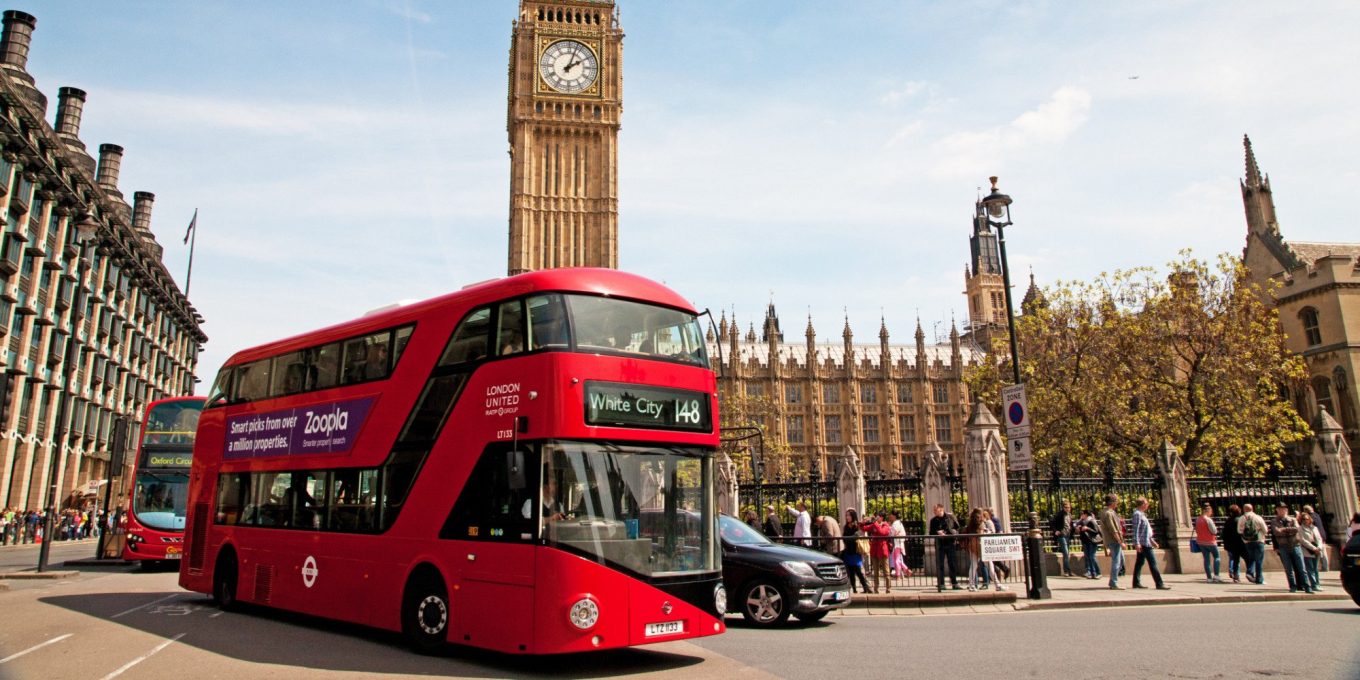
In the US alone, people board public transportation 35 million times each weekday.
And across the globe, transit systems boost urban economies, attract finance and connect citizens with businesses that provide employment, retail and entertainment.
They also provide an opportunity for technology companies to introduce innovations that make transport cleaner, greener and more convenient.
Here’s how tech is transforming mass transit in a few select global cities.
London
London’s iconic red buses are to be fitted with automatic braking and audible warning systems as part of Mayor Sadiq Khan’s drive to ensure no one’s killed in, or by, a London bus by 2030.
The autonomous emergency braking system allows the bus to detect hazards in its surroundings and brake immediately.
Meanwhile, audible warnings will warn pedestrians that a bus is present and bus interiors will be revamped to increase passenger safety.
The UK capital is also stopping purchasing diesel powered buses from this year — the entire fleet will eventually be powered by electricity or hydrogen fuel-cells.
LA
The Los Angeles County Metropolitan Transport Authority (Metro) plans, coordinates, designs and operates public transportation for 9.6 million people in its service area.
And the Metro’s Office of Extraordinary Innovation works in tandem with private companies to adopt emerging technologies as early as possible.
One innovation it’s trialling is a micro transit programme where public vehicles operate in the same way as traditional taxis and can be ordered via mobile phone.
And it also uses drones to inspect catenary wires and rail tracks, meaning manual inspections are unnecessary and faults can be identified and remedied swiftly.
The authority collaborates with private sector specialists on everything from large infrastructure projects like the West Santa Ana Branch Rail to small convenience facilities like station vending machines.
Singapore
Singapore is making a sterling effort to become the world’s first smart nation, seamlessly integrating technology into every nook and cranny of its citizens lives.
And an excellent public transportation system is at the heart of the vision.
Bus stops in the island will soon have interactive maps, Wi-Fi connectivity and swings to make the wait less frustrating.
With four million daily rides, the bus system is vital — so innovations like GPS data analysis ensure that traffic jams are identified quickly, bus speeds are optimised and the number of passengers on board each vehicle is logged.
Tokyo
Japan has been at the vanguard of advances in industries like robotics for many years, so it’s no wonder that new technology is readily applied to transportation in Tokyo.
And the city’s Haneda Airport is fully embracing the potential of automation by starting a trial of driverless buses — which could replace cargo vehicles and shuttle buses by 2020.
Because airport roads have less traffic signals and pedestrians, the associated risks of automated vehicles are lower than on the open road.
And the nation’s tech industry is aiming to expand airport automation to include robotic cleaning and delivery services and AI information desks.
So although some projects described are in their early stages, it’s apparent that new technology has huge transformative potential for mass transit systems across the globe.
Do you think tech is improving public transport? Share your thoughts in the comments section.

Founder Dinis Guarda
IntelligentHQ Your New Business Network.
IntelligentHQ is a Business network and an expert source for finance, capital markets and intelligence for thousands of global business professionals, startups, and companies.
We exist at the point of intersection between technology, social media, finance and innovation.
IntelligentHQ leverages innovation and scale of social digital technology, analytics, news, and distribution to create an unparalleled, full digital medium and social business networks spectrum.
IntelligentHQ is working hard, to become a trusted, and indispensable source of business news and analytics, within financial services and its associated supply chains and ecosystems



























